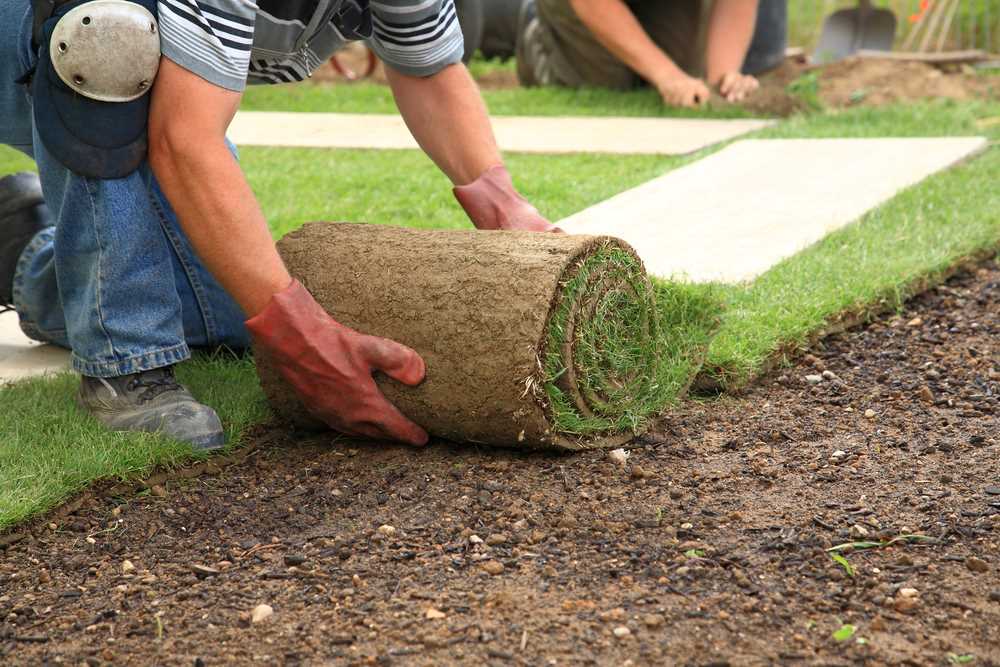
The Essential Role of Water in Establishing Healthy New Sod
Jamie TedderDeep, infrequent watering is the standard recommendation for maintaining an established lawn. For most warm-season grasses, like Bermuda, Zoysia, and St. Augustine, watering 1-2 times per week with a total of 1-1.5 inches encourages deeper root growth, resulting in a more drought-resilient lawn—a critical advantage in the hot, often humid Florida climate. This approach allows for adjustments based on seasonal changes, such as scaling back watering during periods of increased rainfall or cooler temperatures.
However, watering newly installed sod is an entirely different process. As a trusted sod farm in Central Florida, Bethel Farms understands the unique challenges and opportunities that come with sod establishment in a subtropical climate. Proper watering is the foundation for successfully cultivating a healthy, green lawn. While it may be common knowledge that new sod requires more water, understanding the correct amount and frequency is equally crucial to its success.
New Sod Installation Success Starts with Proper Watering
Sod is pre-grown grass cultivated on farms under close monitoring to ensure quality and health. It is grown to provide an instantly green lawn upon installation. However, it requires careful maintenance post-installation to support strong root development and long-term success.
Unlike established turf, which can rely on deep roots for moisture, new sod is vulnerable to drying out because its roots are severed during harvesting and must regrow in the new environment. Proper watering encourages the sod to establish and anchor in the soil.
Key Watering Stages for New Sod
Following a structured watering schedule gives your sod the best start. Initially, deep watering is necessary to saturate the soil and prevent desiccation. Over the following weeks, the frequency and depth of watering should be gradually adjusted to encourage deeper root growth until the sod is established and can be maintained like the rest of your lawn.
Initial Watering: The First 24 Hours
Immediately after new sod installation, water your lawn thoroughly until the moisture reaches at least 6 inches into the soil. This initial watering prevents the sod from drying out and kickstarts the rooting process.
Frequent Watering: The First Week
For the first week, water the sod 2-4 times daily to maintain constant moisture in the top inch of soil. This frequent watering prevents dehydration and encourages the roots to grow into the soil beneath.
Gradual Reduction: The Second Week
In the second week, around day 10, reduce watering to 1-2 times daily, keeping the soil moist but not oversaturated. To prevent stress, regularly check for dry patches and adjust accordingly.
Deeper, Less Frequent Watering: The Third and Fourth Weeks
As the sod establishes stronger roots, transition to watering every other day. At this stage, each watering session should penetrate 3-4 inches into the soil to encourage deeper root growth and improve drought resistance.
Beyond the First Month
One month post-installation, the sod should be well-established. Shift to a regular lawn watering schedule of 1-2 times per week, adjusting based on climate and soil conditions. Monitor your lawn and modify your watering as needed.

Smart Watering Practices for New Sod
Water conservation is a key concern in Florida, where many areas enforce year-round irrigation restrictions regardless of weather conditions. Lawn watering is often limited to no more than twice per week, with additional guidelines for new sod and plantings. For example, some water management districts allow unrestricted watering on the installation day, followed by a 30-day establishment period with more flexible watering allowances—typically within the designated morning and evening hours. While these rules vary by region, understanding and following smart watering practices ensures your new sod receives the moisture it needs while complying with local regulations.
Use Irrigation Technology
Smart irrigation systems with timers and moisture sensors ensure efficient water use and prevent overwatering. These systems also help comply with local watering restrictions by automating schedules based on real-time conditions. Adjust sprinkler heads to target grass, avoiding overspray onto hard surfaces.
Water at Optimal Times
Water your lawn early in the morning or late in the evening to minimize evaporation. Early morning watering is especially beneficial, as it allows grass blades to dry out during the day, reducing the risk of fungal diseases. Avoid midday watering, as the sun can cause rapid moisture loss before it reaches the roots.
Adjust Based on the Weather
Increase watering during hot, dry spells and scale back when rainfall provides sufficient moisture. In cooler months, excessive watering can promote fungal growth and root rot, so adjust your watering accordingly.
Prevent Overwatering
While consistent moisture is crucial, overwatering can suffocate roots and cause disease. Regularly checking weather forecasts can help you make informed decisions and avoid unnecessary watering. Proper drainage is also essential—if water pools on the surface, adjust your schedule or improve soil aeration.

The Benefits of Properly Watering New Sod
Proper watering is essential for helping new sod transition from the farm to your lawn. Since its roots are severed during harvesting, sod needs consistent moisture to reestablish itself in the soil. Without adequate water, new sod can struggle to take root, leading to weak, patchy growth. By following the right watering practices, you ensure a strong, healthy lawn that thrives for years to come.
Encourages Deep Root Growth
Consistent watering helps sod grow deep roots, making the lawn more resilient to drought and heavy foot traffic. Over time, a well-rooted lawn requires less frequent watering and can better withstand environmental stress.
Increases Drought Resistance
Deep, infrequent watering encourages roots to grow downward as they search for moisture from lower soil layers. This reduces the lawn’s dependence on frequent irrigation, making it more adaptable to dry conditions.
Promotes Even Growth
Proper sod care prevents uneven rooting, which can lead to patchiness. Maintaining consistent moisture across your lawn allows the sod to establish uniformly, resulting in a lush, seamless appearance.
Facilitates Nutrient Uptake
Water acts as a transport system for essential nutrients in the soil. When sod receives consistent hydration, it absorbs nutrients more efficiently, promoting strong, healthy grass growth.
Reduces Transplant Shock
New sod undergoes stress when moved from a farm to a new environment. Proper watering minimizes transplant shock, allowing the grass to recover quickly and integrate with the existing soil, ensuring long-term stability.

Final Thoughts
Watering new sod correctly is a critical step in cultivating a thriving, long-lasting lawn. Following a structured watering schedule, adjusting for seasonal conditions, and implementing smart irrigation practices can make all the difference. With proper hydration, new sod will develop deep roots, resist drought, and grow into a lush, durable lawn.
As a trusted sod farm in Central Florida, Bethel Farms provides premium-quality grass to help homeowners and landscapers achieve beautiful, healthy lawns. In addition to sod, we offer grass plugs, tools, and slow-release fertilizers to support successful lawn repair and establishment. Visit our website or contact us today to find the best sod for your property and get expert advice on lawn care.

